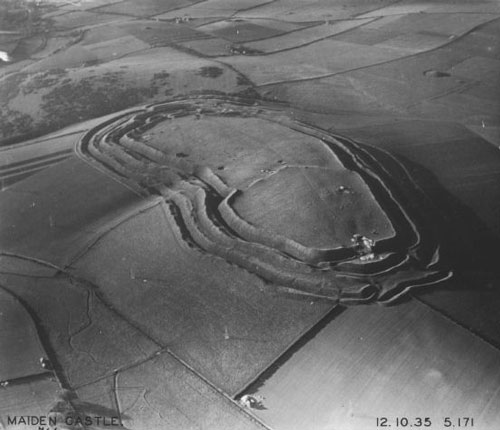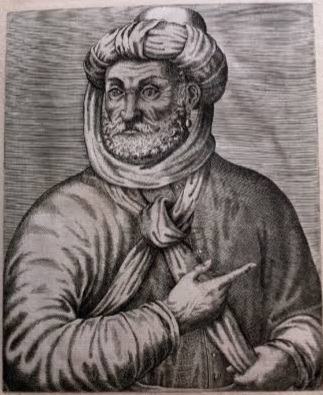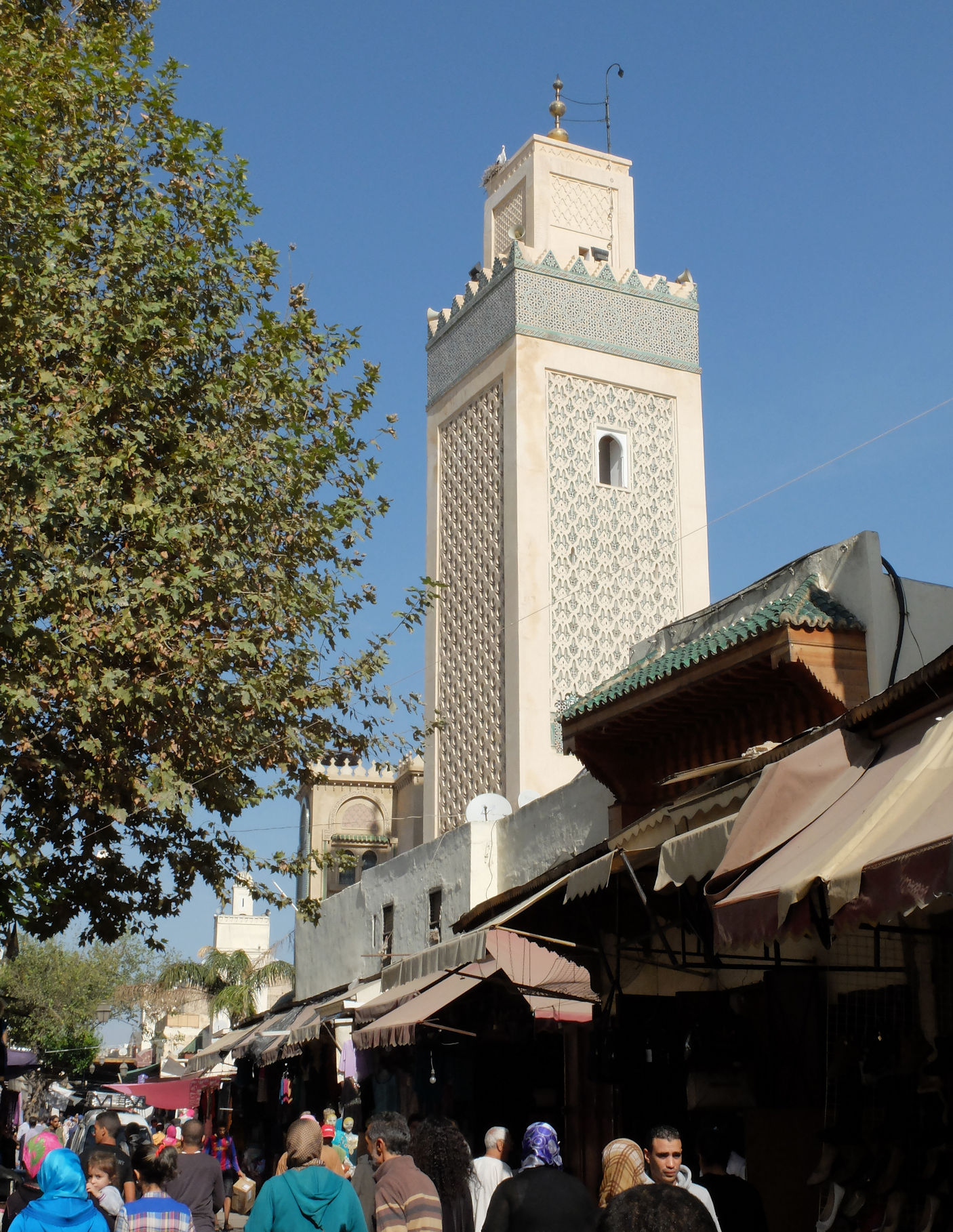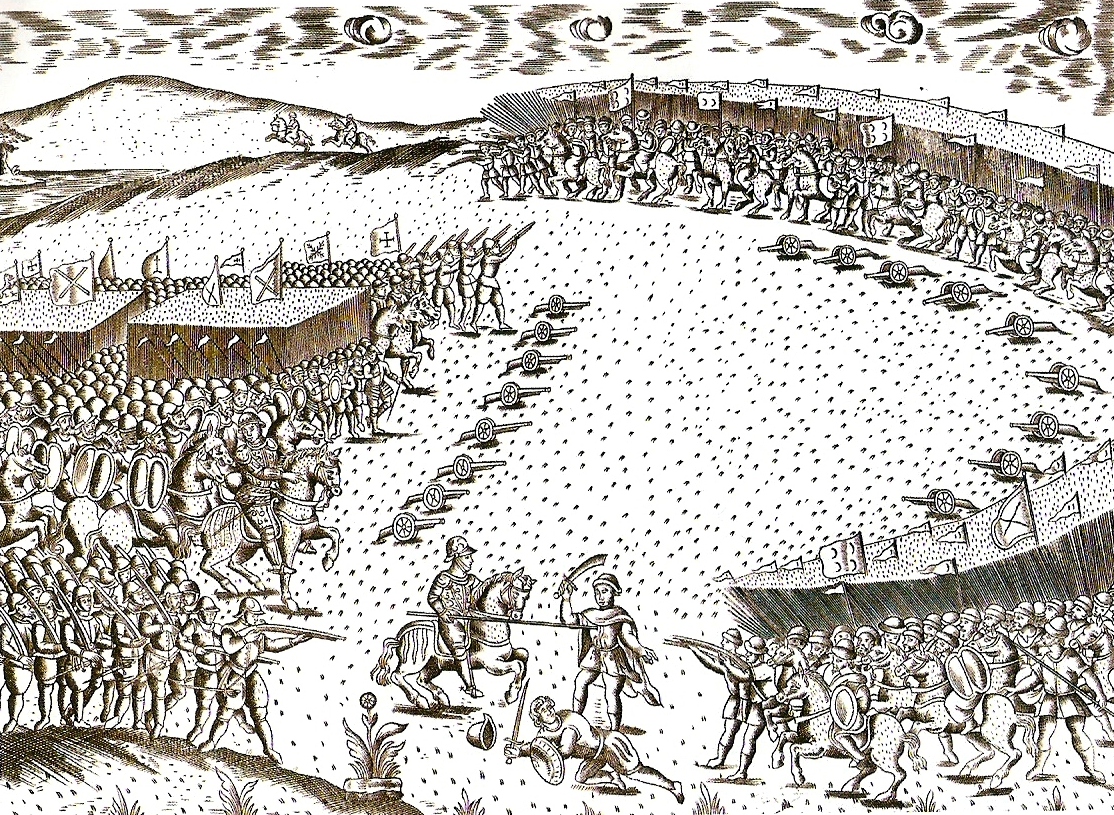|
Borj Sud
Borj Sud () is a fort in the city of Fez, Morocco. It was first established around 1582 by the Saadian dynasty, likely modeled after Portuguese forts of the time. It is located on the hills overlooking the old city (Fes el-Bali) from the south, across the valley from its sister fort, Borj Nord, on the hills to the north of the city. Today it is also known as a prime lookout point over the old city. Historical background Like the Borj Nord, the fort was built in 1582 by the powerful Saadian sultan Ahmad al-Mansour. The Saadians, whose capital was Marrakesh, had faced notable resistance to their rule in Fez and the fort is one of several that they built around the city. They were intended to keep the restless population of Fes el-Bali (the old city) under control as much as to actually defend the city from external attacks. Accordingly, the forts were built in commanding positions overlooking the city, from which their canons could easily bombard the city if desired. The Saadians ... [...More Info...] [...Related Items...] OR: [Wikipedia] [Google] [Baidu] |
Fort
A fortification is a military construction or building designed for the defense of territories in warfare, and is also used to establish rule in a region during peacetime. The term is derived from Latin ''fortis'' ("strong") and ''facere'' ("to make"). From very early history to modern times, defensive walls have often been necessary for cities to survive in an ever-changing world of invasion and conquest. Some settlements in the Indus Valley civilization were the first small cities to be fortified. In ancient Greece, large stone walls had been built in Mycenaean Greece, such as the ancient site of Mycenae (famous for the huge stone blocks of its ' cyclopean' walls). A Greek '' phrourion'' was a fortified collection of buildings used as a military garrison, and is the equivalent of the Roman castellum or English fortress. These constructions mainly served the purpose of a watch tower, to guard certain roads, passes, and borders. Though smaller than a real fortress, the ... [...More Info...] [...Related Items...] OR: [Wikipedia] [Google] [Baidu] |
Marrakesh
Marrakesh or Marrakech ( or ; ar, مراكش, murrākuš, ; ber, ⵎⵕⵕⴰⴽⵛ, translit=mṛṛakc}) is the fourth largest city in the Kingdom of Morocco. It is one of the four Imperial cities of Morocco and is the capital of the Marrakesh-Safi region. The city is situated west of the foothills of the Atlas Mountains. Marrakesh is southwest of Tangier, southwest of the Moroccan capital of Rabat, south of Casablanca, and northeast of Agadir. The region has been inhabited by Berber farmers since Neolithic times. The city was founded in 1070 by Emir Abu Bakr ibn Umar as the imperial capital of the Almoravid Empire. The Almoravids established the first major structures in the city and shaped its layout for centuries to come. The red walls of the city, built by Ali ibn Yusuf in 1122–1123, and various buildings constructed in red sandstone afterwards, have given the city the nickname of the "Red City" ( ''Almadinat alhamra) or "Ochre City" (). Marrakesh grew rapidly and e ... [...More Info...] [...Related Items...] OR: [Wikipedia] [Google] [Baidu] |
Buildings And Structures In Fez, Morocco
A building, or edifice, is an enclosed structure with a roof and walls standing more or less permanently in one place, such as a house or factory (although there's also portable buildings). Buildings come in a variety of sizes, shapes, and functions, and have been adapted throughout history for a wide number of factors, from building materials available, to weather conditions, land prices, ground conditions, specific uses, prestige, and aesthetic reasons. To better understand the term ''building'' compare the list of nonbuilding structures. Buildings serve several societal needs – primarily as shelter from weather, security, living space, privacy, to store belongings, and to comfortably live and work. A building as a shelter represents a physical division of the human habitat (a place of comfort and safety) and the ''outside'' (a place that at times may be harsh and harmful). Ever since the first cave paintings, buildings have also become objects or canvasses of much art ... [...More Info...] [...Related Items...] OR: [Wikipedia] [Google] [Baidu] |
Forts In Morocco
A fortification is a military construction or building designed for the defense of territories in warfare, and is also used to establish rule in a region during peacetime. The term is derived from Latin ''fortis'' ("strong") and ''facere'' ("to make"). From very early history to modern times, defensive walls have often been necessary for cities to survive in an ever-changing world of invasion and conquest. Some settlements in the Indus Valley civilization were the first small cities to be fortified. In ancient Greece, large stone walls had been built in Mycenaean Greece, such as the ancient site of Mycenae (famous for the huge stone blocks of its ' cyclopean' walls). A Greek '' phrourion'' was a fortified collection of buildings used as a military garrison, and is the equivalent of the Roman castellum or English fortress. These constructions mainly served the purpose of a watch tower, to guard certain roads, passes, and borders. Though smaller than a real fortress, they ... [...More Info...] [...Related Items...] OR: [Wikipedia] [Google] [Baidu] |
Marinid Tombs
The Marinid Tombs or Merenid Tombs are a set of ruined monumental tombs on a hill above and north of Fes al-Bali, the old city of Fez, Morocco. They were originally a royal necropolis for the Marinid dynasty which ruled over Morocco in the 13th to 15th centuries. Today, they are a popular lookout point over the historic city. Historical background There is sparse information available on the site and its history. However, the ruined tombs are attributed to the 14th century, during the Marinid dynasty (13th–15th centuries), hence their name. The Marinids conquered Fez in 1250 (CE) and turned it into their capital, eventually cementing this status by building a new fortified palace-city, Fes el-Jdid, in 1276 alongside the existing old city ( Fes el-Bali). Before the foundation of Fes el-Jdid, however, the Marinids established a fortified palace on the hill to the north of Fes el-Bali known as ''al-Qula'' (today also known as the "Hill of the Marinids"). This palace also inc ... [...More Info...] [...Related Items...] OR: [Wikipedia] [Google] [Baidu] |
Early Modern Warfare
Early modern warfare is the era of warfare following medieval warfare. It is associated with the start of the widespread use of gunpowder and the development of suitable weapons to use the explosive, including artillery and firearms; for this reason the era is also referred to as the age of gunpowder warfare (a concept introduced by Michael Roberts in the 1950s). This entire period is contained within the Age of Sail, which characteristic dominated the era's naval tactics, including the use of gunpowder in naval artillery. All of the Great Powers of Europe and the Islamic gunpowder empires were actively fighting numerous wars throughout this period, grouped in rough geographical and chronological terms as: *The European wars of religion between the 1520s and the 1640s (including the Thirty Years' War, the Eighty Years' War and the Wars of the Three Kingdoms) and, the Franco-Spanish War (1635–1659), the Northern Wars, Polish–Swedish wars and Russo-Swedish Wars; *T ... [...More Info...] [...Related Items...] OR: [Wikipedia] [Google] [Baidu] |
Fortifications Of Fez
The Fortifications of Fez (also spelled ''Fes'') comprise a complex circuit of ramparts and gates surrounding Fes el-Bali and Fes el-Jdid, two urban agglomerations that compose the old "medina" of Fes, Morocco. They also include a number of kasbahs (citadels) and forts which were built both to protect and to control the city. These fortifications have been built up over many centuries and the extensive remnants today date from many different periods. The city walls underwent a complex evolution over the centuries with multiple phases of expansion, destruction, and reconstruction affecting different parts of the city's outline. Likewise, the city gates vary greatly in design and date, ranging from heavily fortified defensive gates to simple openings in the walls today. The walls marked both the physical and symbolic limits of the city (and sometimes also of its subdivisions), and as such the gates themselves could acquire added social or political significance. The city's major ... [...More Info...] [...Related Items...] OR: [Wikipedia] [Google] [Baidu] |
Battle Of Alcácer Quibir
The Battle of Alcácer Quibir (also known as "Battle of Three Kings" ( ar, معركة الملوك الثلاثة) or "Battle of Wadi al-Makhazin" ( ar, معركة وادي المخازن) in Morocco) was fought in northern Morocco, near the town of Ksar-el-Kebir (variant spellings: ''Ksar El Kebir'', ''Alcácer-Quivir'', ''Alcazarquivir'', ''Alcassar'', etc.) and Larache, on 4 August 1578. A Moroccan victory, the battle has been described as "the greatest military disaster the Portuguese ever suffered in the course of their overseas expansion." It marked an end to Portuguese attempts to reconquer territories it had lost in Morocco. The combatants were the army of the deposed Moroccan Sultan Abu Abdallah Mohammed II, with his ally, the King of Portugal Sebastian I, against a large Moroccan army under the new Sultan of Morocco (and uncle of Abu Abdallah Mohammed II) Abd Al-Malik I. The Christian king, Sebastian I, had planned a crusade after Abu Abdallah asked him to help re ... [...More Info...] [...Related Items...] OR: [Wikipedia] [Google] [Baidu] |
Fes Jdid
Fes Jdid or Fes el-Jdid () is one of the three parts of Fez, Morocco. It was founded by the Marinids in 1276 as an extension of Fes el Bali (the old city or ''medina'') and as a royal citadel and capital. It is occupied in large part by the historic Royal Palace (the ''Dar al-Makhzen''), which was once the center of government in Morocco and which is still used on occasion by the King of Morocco today. The district also contains the historic Mellah (Jewish quarter) of the city. Since 1981 it has been classified, along with Fes el-Bali, as a UNESCO World Heritage Site. History Marinid period (13th–15th centuries) Fes el-Jdid was founded in 1276 by the Marinid Sultanate, Marinid sultan Abu Yusuf Yaqub ibn Abd al-Haqq, Abu Yusuf Ya'qub. It was to serve as the new royal citadel and center of government for Morocco under Marinid rule, including a Royal Palace (Dar al-Makhzen), military barracks, and residential neighbourhoods. Before then, the main center of power and govern ... [...More Info...] [...Related Items...] OR: [Wikipedia] [Google] [Baidu] |
Ahmad Al-Mansur
Ahmad al-Mansur ( ar, أبو العباس أحمد المنصور, Ahmad Abu al-Abbas al-Mansur, also al-Mansur al-Dahabbi (the Golden), ar, أحمد المنصور الذهبي; and Ahmed al-Mansour; 1549 in Fes – 25 August 1603, Fes) was the Saadi Sultan of Morocco from 1578 to his death in 1603, the sixth and most famous of all rulers of the Saadis. Ahmad al-Mansur was an important figure in both Europe and Africa in the sixteenth century. His powerful army and strategic location made him an important power player in the late Renaissance period. He has been described as "a man of profound Islamic learning, a lover of books, calligraphy and mathematics, as well as a connoisseur of mystical texts and a lover of scholarly discussions." Early life Ahmad was the fifth son of Mohammed ash-Sheikh who was the first Saadi sultan of Morocco. His mother was Lalla Masuda. After the murder of their father, Mohammed in 1557 and the following struggle for power, the two brothers Ahmad ... [...More Info...] [...Related Items...] OR: [Wikipedia] [Google] [Baidu] |
Saadian
The Saadi Sultanate (also rendered in English as Sa'di, Sa'did, Sa'dian, or Saadian; ar, السعديون, translit=as-saʿdiyyūn) was a state which ruled present-day Morocco and parts of West Africa in the 16th and 17th centuries. It was led by the Saadi dynasty, an Arab Moroccan Sharifian dynasty. The dynasty's rise to power started in 1510 when Muhammad al-Qa'im was declared leader of the tribes of the Sous valley in their resistance against the Portuguese who occupied Agadir and other coastal cities. Al-Qai'm's son, Ahmad al-Araj, secured control of Marrakesh by 1525 and, after a period of rivalry, his brother Muhammad al-Shaykh captured Agadir from the Portuguese and eventually captured Fez from the Wattasids, securing control over nearly all of Morocco. After Muhammad al-Shaykh's assassination by the Ottomans in 1557 his son Abdallah al-Ghalib enjoyed a relatively peaceful reign. His successors, however, fought with each other, culminating in the 1578 Battle of Ksa ... [...More Info...] [...Related Items...] OR: [Wikipedia] [Google] [Baidu] |
Borj Nord
Borj Nord or Burj al-Shamal (), Al-Burj ash-Shamali () is a fort in the city of Fez, Morocco. It was first established in 1582 by the Saadi dynasty, modeled after the Portuguese forts in the 16th century. It is among the largest defense structures around the city of Fez and one of the few to incorporate European-style changes in military architecture in the gunpowder age. Today, the fort is open to public as the Museum of Arms. Historical background of the fort The fort was built in 1582 by the powerful Saadi sultan Ahmad al-Mansour. The Saadians, whose capital was Marrakesh, had faced notable resistance to their rule in Fez and the fort is one of several that they built around the city. They were intended to keep the restless population of Fes el-Bali (the old city) under control as much as to actually defend the city from external attacks. Accordingly, the forts were built in commanding positions overlooking the city, from which their canons could easily bombard the city ... [...More Info...] [...Related Items...] OR: [Wikipedia] [Google] [Baidu] |











